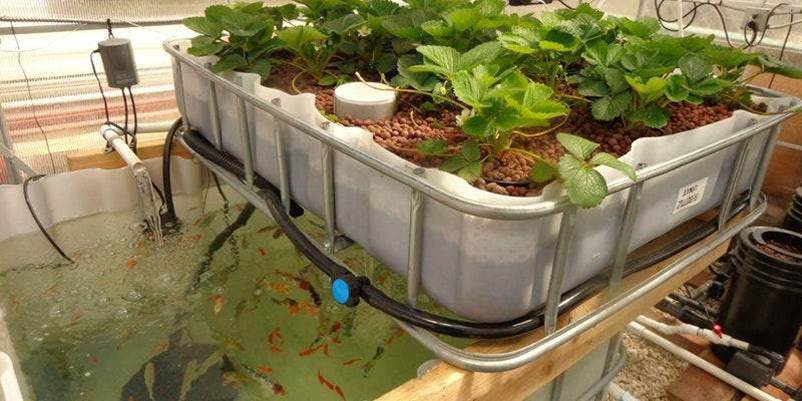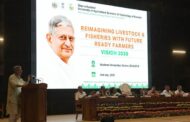Dr. Pravesh Kumar, Dr. AnkurJamwal and Roshan Kumar Ram
Introduction
The population of the world is increasing at an alarming rate, and it is estimated that the world population will reach 8.5 billion by the year 2030. Therefore, the food production to feed such a large population should also increase, which can be achieved only by efficient utilization of existing resource and by theexpansion of agriculture and allied sector.
The resources of land and water are limited so the further expansion of agriculture farming sector is challenging. Excessive and indiscriminate use of fertilizers and pesticides are also culprits in reducing soil productivity, hence reducing the agricultural growth rate.
In addition to reduced soil productivity, runoff from heavily fertilized field also increases nitrogen and phosphorus level in the water and deteriorates its quality. These challenges can be overcome through innovative and improving farming techniques.The technological advancement in the field of fish and crop production can help in this.
Aquaponics farming has the potential to overcomesome of these challenges if the farmers are able to maintain the system with proper technicalsupport. In India, Aquaponics has received relatively lower attention due to high initial investment, but in other parts of the world it is becoming quite popular. However, in India also there has been a gradual increase in awareness of this system due to its advantages.
Aquaponics farming
Aquaponics isa combination of aquaculture and hydroponics in which fishes and crops, especially leafy vegetables,are grown together in a re-circulating system. It is an innovative method of farming which uses fish-waste as a natural fertilizer for plants in a nutrient-rich ecosystem. The plants and nitrifying bacteria remove ammonia and other nitrogenous compounds from the water, making it safe for fish to live in. The main elements foraquaponics system are the fish tank, grow beds/plant supporting channel, pumps and filters. The success ofaquaponics requires proper maintenance of the plants, fish, and nutrients that gives a well-balanced andinterdependent relationship. Aquaponics farming is suitable for the farmers in areas where water is scarce andwho havesmallerland holdings. Crops grown in aquaponics are organic and able to grow in denser climate.
Aquaponics vs Hydroponics
Both aquaponics and hydroponics, involve growing of plants in a soil-free medium where the roots are supported by an inert material, instead of soil, and directly immersed in water. Aquaponics and hydroponics rely on an engineered set-up that recycles a fixed quantity of water through the system. The basic difference between aquaponics and hydroponics is that former produced vegetables organically, whereas hydroponics uses inorganic inputs to grow vegetables. The second difference is that an aquaponics system produced both fish and vegetables, whereas hydroponics yields only vegetables. Aquaponics is a sustainable model of organic food production that involves a symbiotic combination of aquaculture and hydroponics.
Aquaponics in India
In India Aquaponics is still in infancy with only few large-scale commercial aquaponics farms like LandCraft Agro, Madhavi farms, Red Otter farms. LandCraft Agro currently has a growing facility of 90,000 sq.ft. and they plan to expand this to over 2 million square feet in size. The farm cultivates around 12 green leafy vegetables and fishes, while Madhavi farm have growing area of 20 acre. Small scale backyard and terrace aquaponics farming are also practiced in some states, especially in Cherai village in Kerala which is now known as “India’s First Aquaponics Village”. There are more than 200 aquaponics operational units in Cherai and it attracts farmers and entrepreneurs from different parts of the country.
Cultivable fish species and vegetables
Almost all the freshwater fish species can be grown in the system, but the selection of species will depend on ease of care and size of your system. GIFT Tilapia (Genetically Improved Farmed Tilapia), is the preferred variety as it has a high growth rate within a few months and grows well within confined spaces. Other fish species like Gold fish, Common carp, catfishes, Indian Major Carps can also be cultured. The leafy vegetablesare most preferred plant species for cultivation in aquaponics system’ however, other vegetables like tomato, fruits and flowers can also be grown. The common leafy vegetables grown in aquaponics system are broccoli, cauliflower, cabbage, pakchoi, kale, watercress,swiss chard, radishes, and herbs such as basil, mint, chives. The selection of vegetables and fish species will also depend on type of aquaponics system being used.
Types of aquaponics designs
The design of aquaponics depends on the capacity to invest, area of culture, type of cropand climatic condition of the location. Before deciding on the design of the aquaponics system, it is important to compare the pros and cons of each design. Although there are different designs, three most common types of aquaponics designs are as follows:
1. Nutrient Film Technique (NFT)
NFT system is a commercial-scale aquaponics design which is space-efficient and requires less manpower. Crops are easy to harvest due to vertical design. This design is most suitable for leafy vegetables because large fruit plants roots can clog the channel. In this system, the roots are also exposed to more air than water so they are vulnerable to weather fluctuations.
2. Media Bed
This design uses containers filled with rocky media, such as gravel or expanded clay, to support the roots of plants. The nutrient rich water from fish tank drains on this gravel filled containers having plants. The media bed supports the plants and acts as both mechanical and biological filter to capture and breakdown wastes.This design is best suited for backyard culture and beginners because it does not require much input to function well. Because the media supports plants like soil would, it is possible to produce plants with large root mass such as fruits, flowering plants, vegetables, and root vegetables. But this design requires more space, has higher labor cost andis hard to scale into commercial use.
3. Deep Water Culture (DWC)
This design is most stable among all three designs and commonly used for commercial culture. The floating rafts are used to suspend the plants roots in nutrient rich well aerated water. Due to suspended nature of plants in this design it is also known as raft or float systems. The water from fish tank first needs to be filtered before transferring to plants increases the cost of this system. The roots are submerged in this design, so temperature fluctuation is less which makes this design suitable for warmer climate. In addition, larger root zone plants can be used and removing plants is much easier than in media beds.
Marketing of the produce from aquaponics system
The market for organic produce is increasing at a very fast pace in India due to rise in customer awareness and knowledge about organic produce and its benefits. As vegetables from aquaponics are also organic, they will also benefit from the expanding market prospects.A recent report suggests that the Global Aquaponics market is set to rise at 13.4% of Compound Annual Growth rate (CAGR) in the period 2019-2024, over the last period, 2014-2019. The report predicts the market to reach around USD 1.34 bn, as against the actual figure ranging between USD 580 mn to 630 mn in 2018.
Challenges in Aquaponics
- Development of energy-efficientsystems with optimized nutrient recycling and suitable pathogen controls.
- Development of effective value chains andefficient supply chain management.
- Need to develop legislation and licensing policy for success of future aquaponics.
- The technological challenge isthat the nutrients in the effluent produced by fish are different than that optimally required for plants. But it can be solved by using decoupled aquaponics systems (DAPS), which uses water from the fish tank for plant growth; however, this water will never return to fish tank. The water goes to mineralization components and sludge bioreactors containing microbes that convert organic matter into bioavailable forms of key minerals, especially phosphorus, magnesium, iron, manganese and sulphur for plant growth.
Advantages
- Aquaponics uses 90% less water when compared to soil-based agriculture.
- It produces 2-3 times more vegetables per unit area than normal soil base cultivation.
- It produces good quality fish protein also
- The produced vegetables are organic
- It is environment friendly, energy efficient and totally supportive to environment.
Disadvantages
- Initial investment is very high for a large-scale commercial unit.
- The energy requirement is high for the large-scale system, which increases the operational cost and environmental concern.
Conclusion
Aquaponics is an emerging and promising food producing system in India. It can provide a livelihood to thousands of marginal farmers and unemployed youths apart from its promising fulfillment of nutritional security for increasing population. The technical interventions in designs of aquaponics could make it more affordable and reliable food producing system which will surely encourage the farmers. The technical support and new policies are needed to popularize aquaponics in India so that more people can take it up as a source of livelihood and employment generation.
(The authors are working in the College of Fisheries, Dr. Rajendra Prasad Central Agricultural University, Dholi, Muzaffarpur, Bihar. Views expressed are personal.)
Please share your experience, interesting news articles and case studies at aquapostnews@gmail.com)





